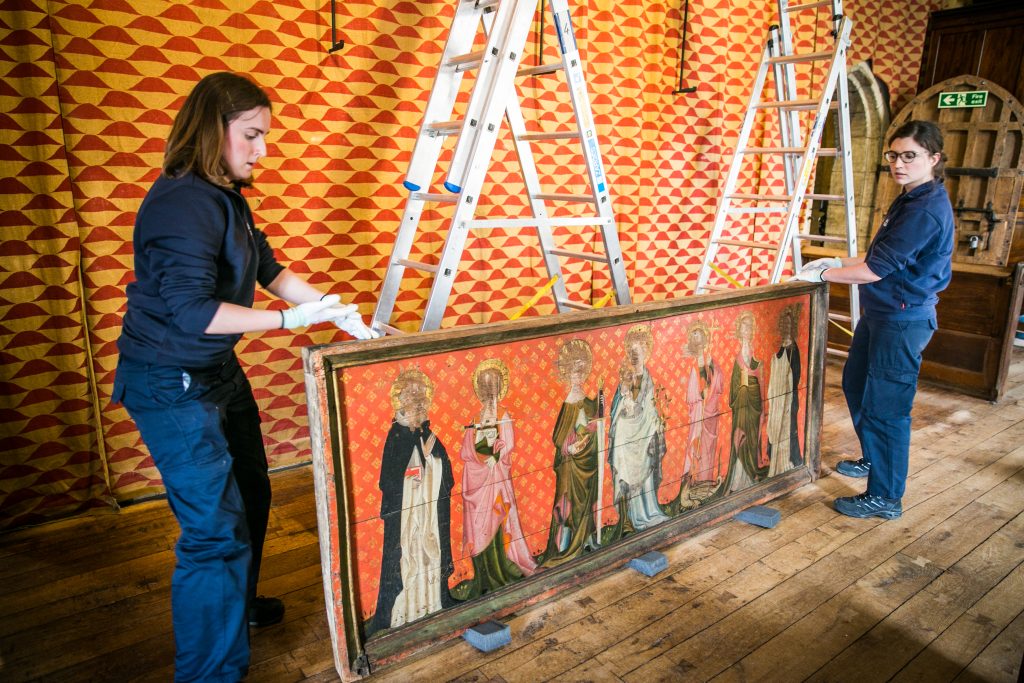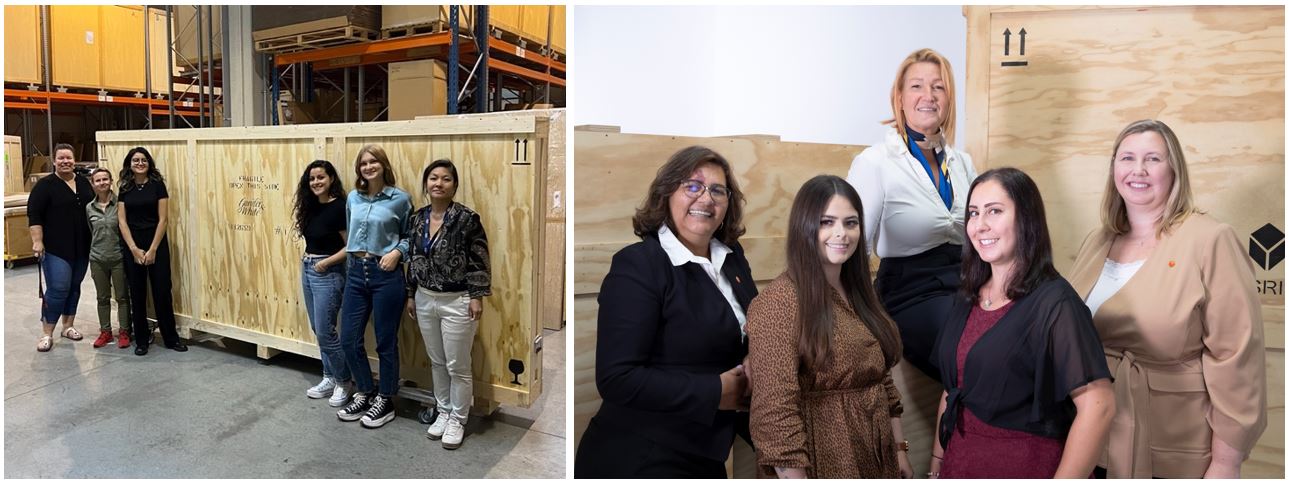
“Excellence has no sex,” wrote the German-born sculptor Eva Hesse, a fact reflected in the work of ICEFAT agents around the globe. When compared with the broader logistics industry – in which only 2% of employees are women – our agents have led the way in diversifying their workforces, as they continue to recognise the value brought by a gender-diverse working environment. Certainly, around half of the attendees at the recent ICEFAT Convention in Amsterdam were women. But how have we in arts logistics tackled gender stereotypes, and encouraged women in what has previously been a male-dominated sector?
I. A MANNER OF SPEAKING

Aimee Harlib of Uovo (US)
A necessary realisation, as explored in our last blog post, has been that recruitment is ”all about perception” – if we advertise open positions with a gendered vocabulary, we are likely to alienate potential employees who would bring with them a vital and varied skillset. After all, across our workforce we need to connect brawnwitha duty of care and a sense of custodianship. Aimee Harlib, who works for US company UOVO’s West Coast facility, recalls that “language” was a preliminary hurdle on entering the industry:
Often gendered and biased, I have personally experienced communication that assumes I, as a woman, have less confidence or ask too many questions.
It is thus vital that we use non-discriminatory language during the recruitment process and continue to revise our methods of communication in the workplace. Certainly, Aimee’s initial frustrations were alleviated through “open dialogue” with her colleagues, as she believes that “when a company is open to more diverse experiences and voices, solutions and efficiency are strengthened in the process”.
II. LEADING LADIES

The all-women office at Gander & White Paris, France (L) and women in the senior team of SRI, US (R)
Unbiased appointments of women at all levels are yet another way in which we in the art logistics sector have fostered diversity – Gander & White Shipping in France has, for example, long encouraged its female employees such that it now has an exclusively female office team. Such appointments have exponential benefits, for women at a junior level are more likely to apply, progress, and succeed when led by other women in managerial roles. Courtney Burbela, from US-based SRI Fine Art Services, sits on a senior management team where half the members are women, including the company’s president; she believes that “our industry is fertile for gender diversity” and recognises the significance of having women at the top of the ladder:
Seeing a woman run the company is a powerful example and it certainly echoes through all areas of the business.
Another respondent, who wishes to remain anonymous, maintains that ‘male-dominated industries are cut-throat’, but acknowledges that ‘promoting women within [a] company rather than outsourcing’ encourages female employees to believe in equal opportunity. The significance of role models should not be ignored, and with female leadership on the rise across the ICEFAT membership, Jenna Forrest of Canadian member PACART echoes the feeling of our membership in commenting she is “optimistic that in the near future, we will see more women in every facet of [the] industry”.
III. KNOWING THE ROPES

Maria Uribe of Cooke’s Crating (US)
ICEFAT agents have further benefited from hiring beyond the traditional logistics industry, and bringing in expert knowledge from more diverse sectors, particularly the broader arts world. Yasmeen Walker, for example, came to Crozier Fine Arts in New York without any direct logistical experience, but with a wealth of knowledge from having worked with galleries, private collectors, and charitable foundations as a consultant:
I was drawn to the combination of business acumen and client relationships that are so important in this field. I enjoy supporting our clients, who have an essential role in the art market.
Many women in our industry came into their roles unexpectedly, because traditional entry-points into logistics remain targeted towards men. However, if we can continue to actively hire from adjacent fields and “offer support and opportunity to those who are interested”, as Maria Uribe, Fine Art Logistics Manager at California-based Cooke’s Crating observes, we will reap the benefits of a diversely qualified workforce. Maria pursued a nursing degree in her early years of working in art logistics and the welcoming environment provided by colleagues, manuals left by predecessors, and the interactions and global insight found at ICEFAT Conferences that she attended enabled her to fully embrace “the awesome responsibility of shipping priceless art.” Maria’s experience offers a blueprint for welcoming individuals with non-artistic backgrounds into ICEFAT companies.
Aimee Harlib of Uovo neatly summarises the pragmatism of equitable treatment of genders by rhetorically asking:
“What is logistics? It is finding solutions to move something from point “A” to “B”, or even to “Z”. This should not be about gender; it should be about the job and finding the best solutions for the project.”
Our membership has certainly taken positive steps in the more than four decades since the foundation of ICEFAT. Efforts should continue to be made apace, and our next blog post will consider the experience of women in different roles within our membership.



